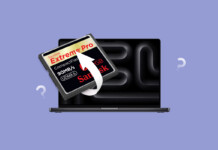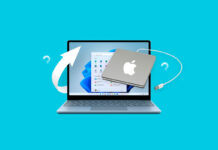
When you delete files from your Mac, they first go to the Trash, where they remain until you restore them, clear the Trash manually, or macOS cleans the Trash after a specific time period. But here’s the thing: it’s easy to accidentally empty the Trash, only to realize moments later that you still needed those files. Unfortunately, you can’t undo empty Trash on Mac. The good news is that you can recover deleted trash on Mac using several methods, and we describe them all in this guide.
Can You Recover Deleted Files From Trash on Mac?
Yes, you can recover deleted files from Trash on Mac, but the method depends on your backup situation. If you have a Time Machine backup from before you emptied the Trash, you’re in luck: simply skip to Method 2 below to restore emptied Trash Mac files without worrying about the technical factors that affect other recovery methods.
Without a backup, you’ll need Mac trash recovery software to recover files from emptied Trash. Why? Because deleted files remain on your drive until new data overwrites them, but they’re impossible to retrieve using built-in macOS features. With the right software, you should be able to restore the missing files as long as the following factors don’t negatively come into play:
- Continued usage of the drive: The moment you realize you’ve accidentally emptied Trash on your Mac, stop using it immediately. Every new file you save, every app you install, even background system processes can overwrite the deleted data you’re trying to recover. For the same reason, you should always download and install data recovery software on a different storage device than the one where the data loss occurred.
- Drive Type (HDD vs SSD): Traditional spinning hard drives, such as those in old Macs, give you more time for Mac recovery of files deleted from Trash. The problem is that modern Macs use SSDs equipped with TRIM, a feature that automatically erases deleted data blocks to maintain drive performance. Sometimes, TRIM is triggered almost immediately, but it can also take a while, so a small but important window of opportunity does exist.
- Mac Chip Compatibility (M1-M4 and T2): Not all recovery apps can access system drives on newer Macs with Apple Silicon (M1, M2, M3, M4) or T2 security chips. These chips add security restrictions that block many recovery tools. We’ll recommend specific tools that work with these newer Macs in the methods below.
Before starting recovery, make sure the Trash was actually emptied. If you can’t locate the Trash icon on your Dock, check out the section titled What to Do If the Trash Icon Disappeared? for quick fixes. Once you’ve confirmed the files are gone, proceed with the recovery methods below.
How to Recover Emptied Trash on Mac
Ready to bring back those deleted files from your emptied Trash on Mac? You have two main options that offer optimal results: use specialized data recovery software or restore from a Time Machine backup.
Method 1: Recover Emptied Trash on Mac with Software
There are quite a few tools available on the market that can be used for data recovery purposes on a Mac. However, not all of them can recover files from an emptied Trash, especially on newer Macs with security restrictions.
Disk Drill is among the Mac data recovery software that works on Macs with M1, M2, M3, M4, or T2 chips since it has its own kernel extension. Moreover, it supports almost any file type and format (video, audio, archive, images, documents, etc.) and can be used by anyone regardless of their technical knowledge thanks to its user-friendly design.
📝 Note: If you’re using a Mac with Apple Silicon or T2 chip, you may need to install Disk Drill’s system extension. See the installation guide for detailed instructions.
- Download Disk Drill for Mac and follow the onscreen instructions to install it on a drive different from where your data was lost. You can then launch the application.
- Choose the hard drive which contained the deleted files from the list of available devices. Then select your scan type:
- Universal Scan (recommended): Best for most file types and general recovery from emptied Trash.
- Advanced Camera Recovery (ACR): Use this as a second option if your Trash contained videos originally stored on SD cards from cameras or drones, and Universal Scan didn’t fully recover them.
- Click Search for lost data to initiate the scan.
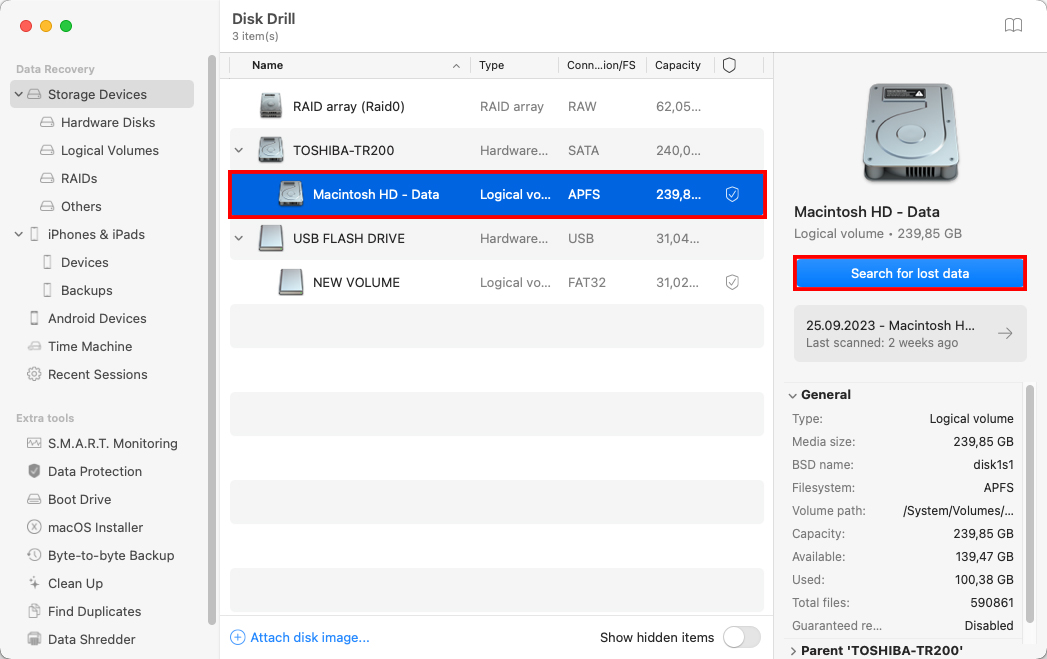
- Wait for the scan to finish and click Review found items.
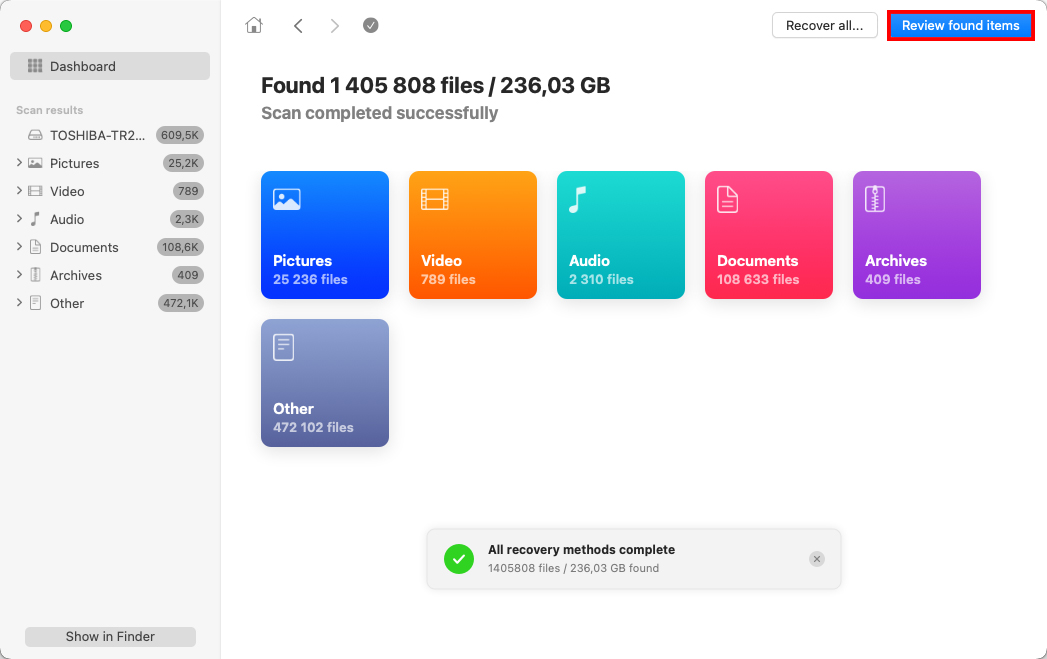
- Use the filters at the top of the scan results to narrow down your search by file type, size, or date. If you remember the name of the deleted file or its format, use the search field at the top-right.
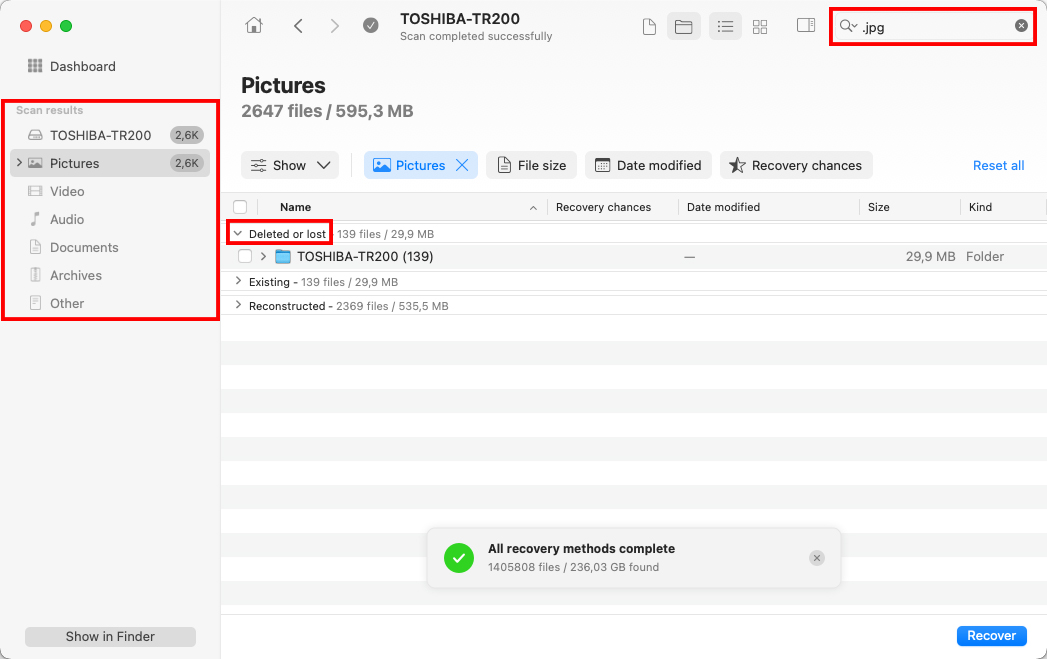
- Click any file to preview it and verify it’s the one you need. Then, select all files you wish to restore and click the Recover button.
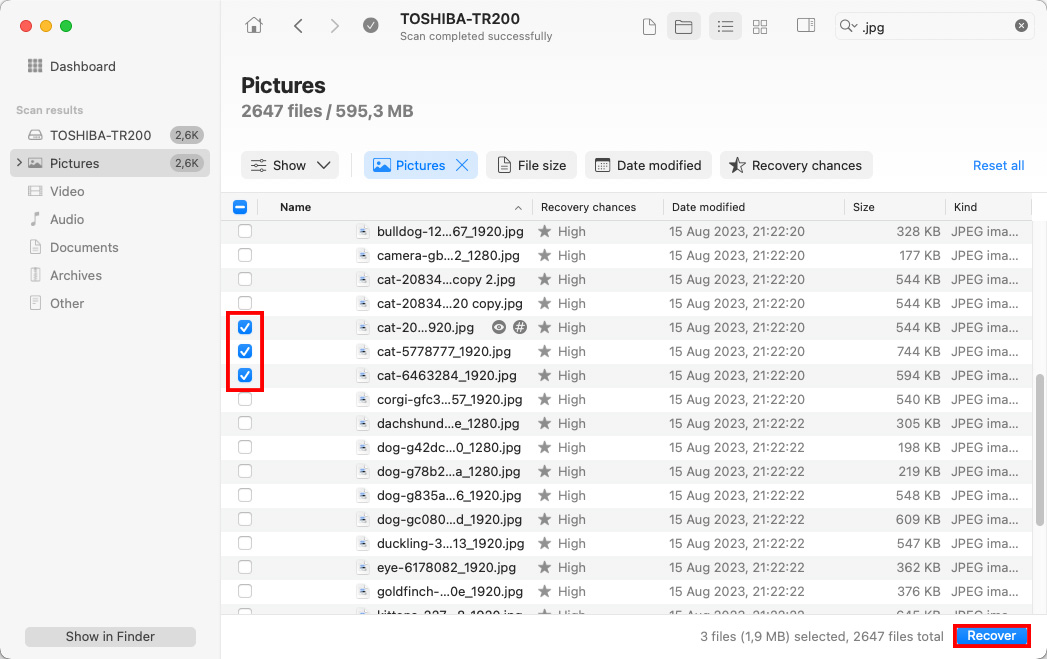
- Choose a recovery destination (to avoid data overwriting, select a folder on a different drive from where the files were originally stored) and click Next to confirm.
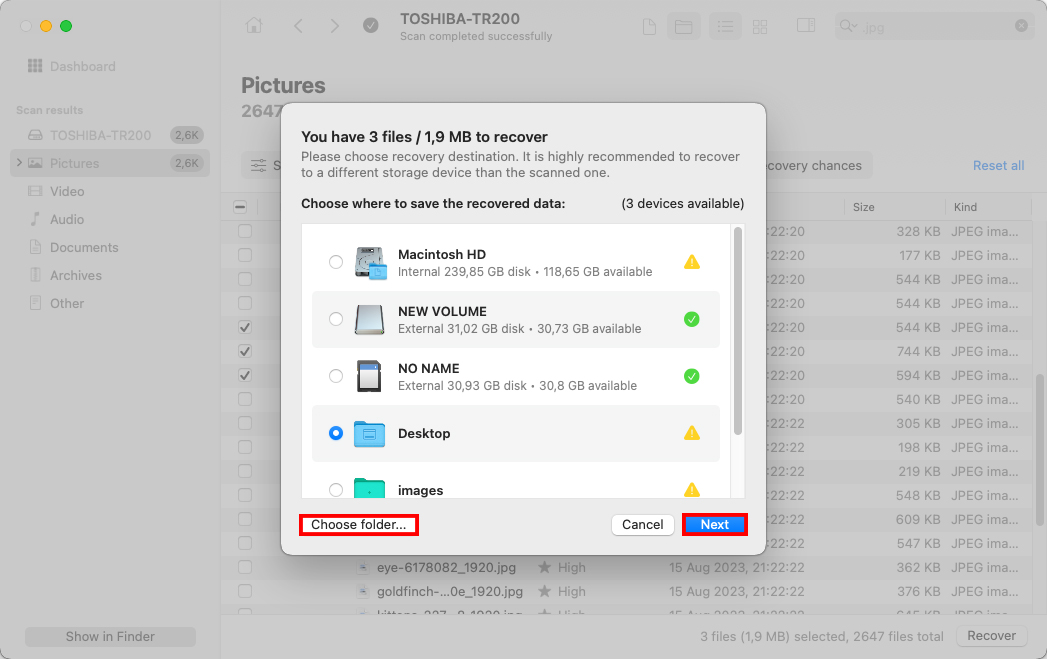
Disk Drill can be downloaded and used to scan your drive for free. However, to actually recover files from emptied Trash on Mac, you’ll need to upgrade to the Pro version.
Method 2: Recover Emptied Trash From a Time Machine Backup
If you have Time Machine enabled on your Mac, you should be able to retrieve the deleted files from one of the backups or system snapshots that were made by the tool. This process is fairly easy and quite safe. All you need is the external hard drive with the Time Machine backups (if you were using one to backup your Mac) and your computer.
- Connect the drive containing your Time Machine backups to your Mac (if you used an internal drive for the backups, skip this step).
- Using the menu bar at the top, click the Time Machine icon and choose Browse Time Machine Backups from the drop-down menu.
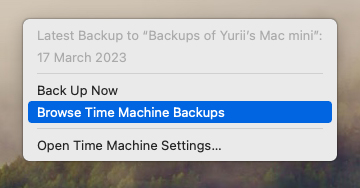
- Go to the folder where the needed files were located before deletion.
- Use the arrows or the timeline on the right to go to the backup version containing the files that you’re searching for.
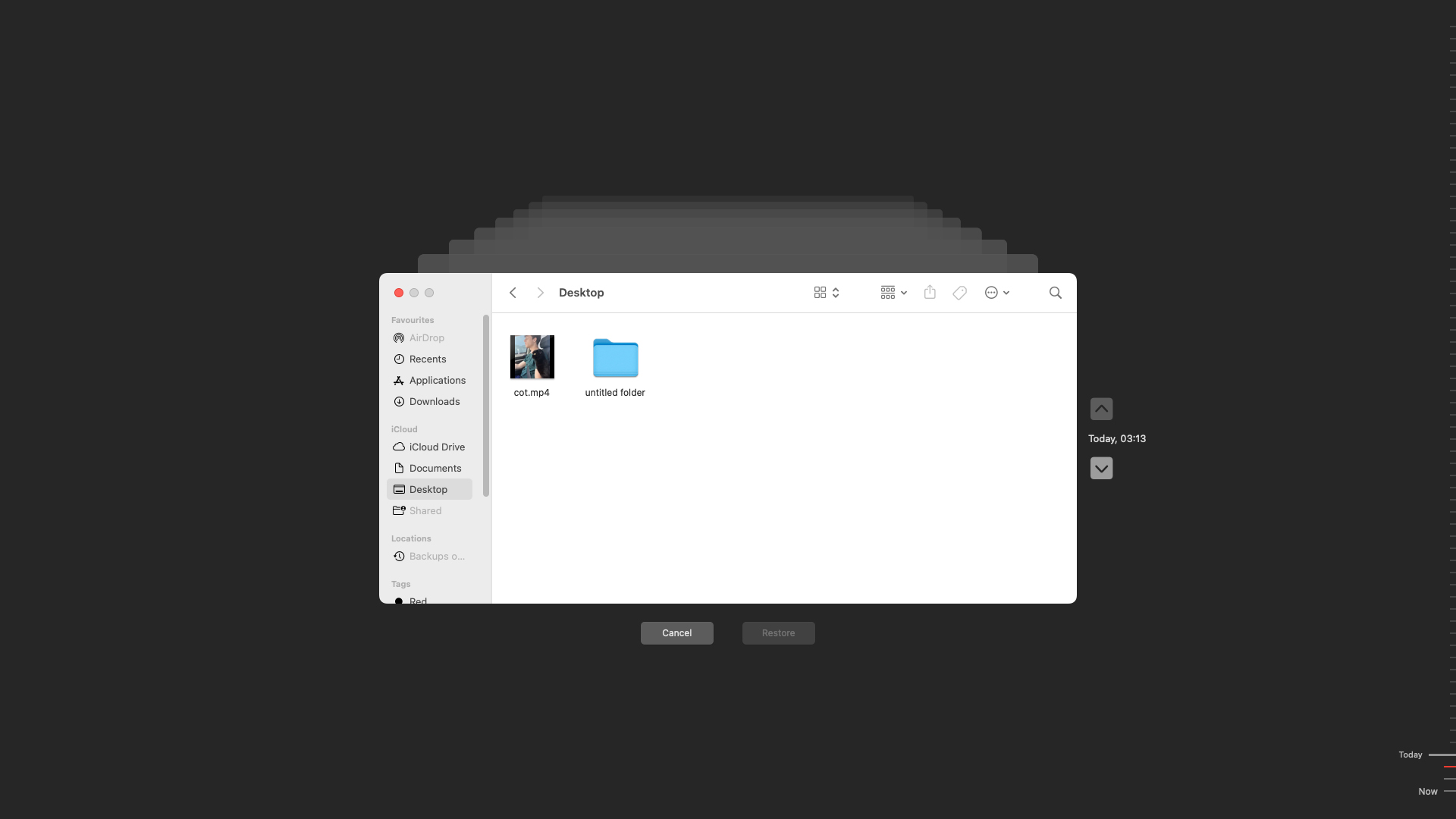
- To preview a specific file, click it and press the Spacebar on your keyboard.
- Choose the files that you wish to recover and click the Restore button.
Method 3: Contact Professional Services for Trash Recovery on Mac
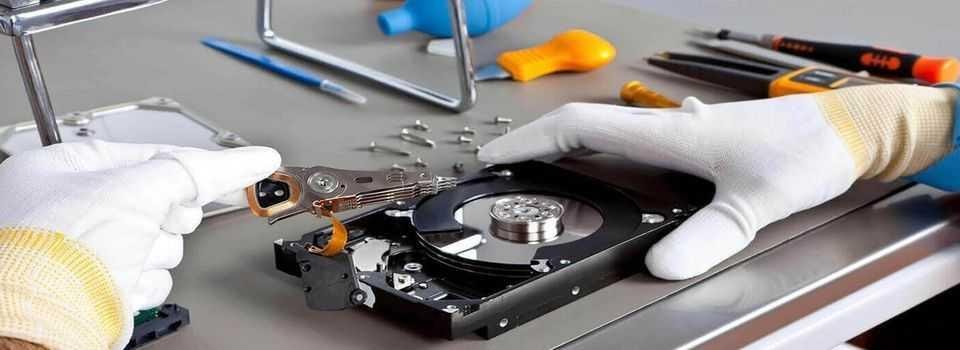
When software solutions and Time Machine backups aren’t enough to recover files from emptied Trash on Mac, professional data recovery services can sometimes (not always) still save the day.
Professional recovery services work by physically examining your drive in cleanroom environments to prevent dust contamination. Technicians use specialized hardware and proprietary software to read data at the sector level to bypass the operating system entirely. As such, they can sometimes recover data from drives that won’t even mount on your Mac.
The downside? Professional recovery isn’t cheap. Prices typically range from $300 to $3000 depending on the drive type, damage severity, and urgency. Some services charge evaluation fees just to diagnose the problem, while others offer “no data, no fee” policies.
Given these factors, here’s when it makes sense to consider professional data recovery services:
- Your Mac’s drive makes unusual clicking or grinding noises.
- The drive doesn’t appear in Disk Utility at all.
- Business data is at stake and you can’t afford to lose it.
- Software recovery tools fail to find your files.
📝 Note: Professional services aren’t miracle workers. They cannot recover data that’s been overwritten by new files or erased by TRIM on SSDs. Once TRIM permanently removes data blocks on modern SSDs, or new data physically overwrites the storage locations on any drive, those files are gone forever. The same goes for encrypted drives you don’t know the correct password to.
What to Do If the Trash Icon Disappeared?
By default, Trash is located at the end of the Dock on all Macs. The folder’s icon looks like a garbage can and might be a bit different depending on what macOS version your computer is using. If you can’t find it in its usual spot, there are two alternative ways that can help you access it.
![]()
Option #1: Use Terminal to Access Trash
Terminal provides direct access to your Mac’s Trash folder through text-based commands. While it might look technical, the process is actually simple.
Here’s how to access and recover files from Trash using Terminal:
- Open Terminal (go to Launchpad and type Terminal in the search field).
- Copy-paste the following command into the Terminal window and hit the Return key:
cd ~/.Trash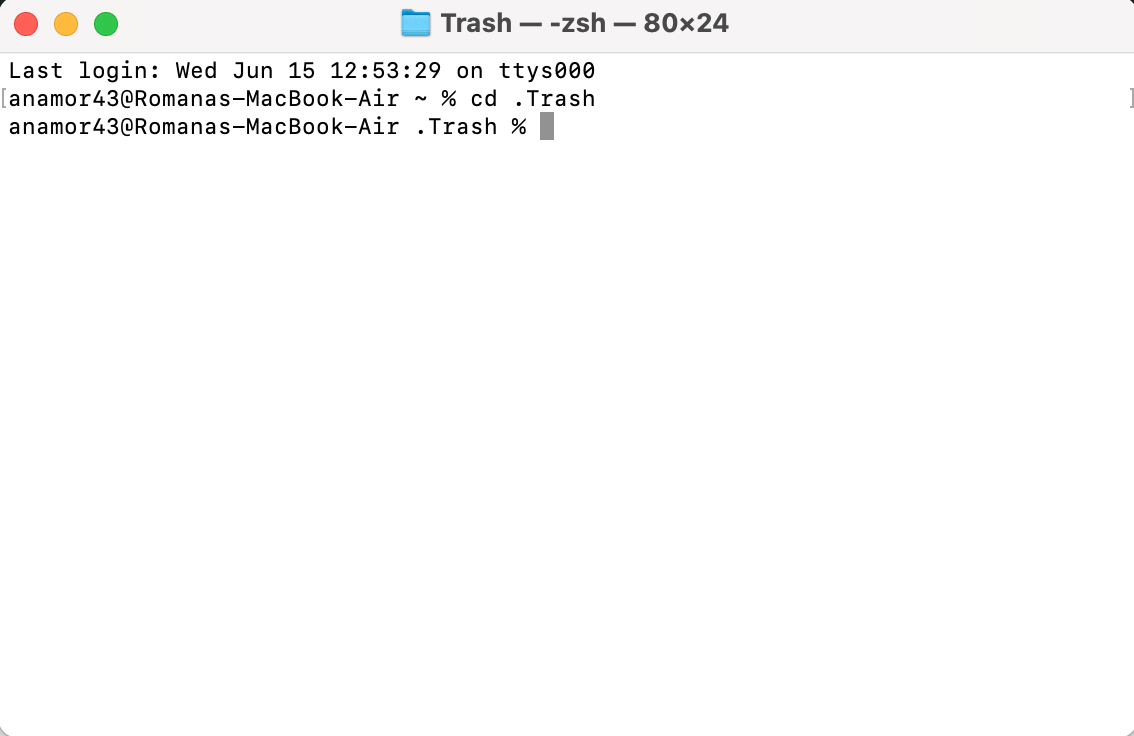
- Then copy-paste this command and hit Return:
ls -al ~/.Trash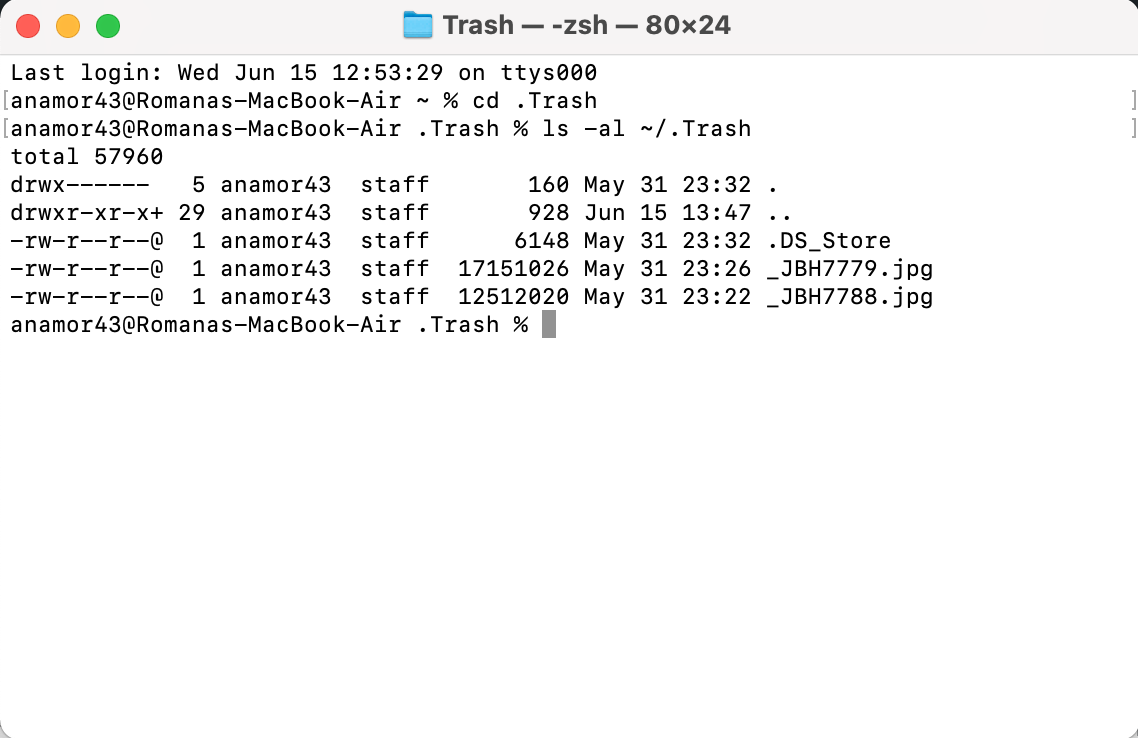
You’ll see a list of files currently in your Trash. Now, check if the files you need are there. If you find the files you want to recover, you also need to complete the following steps:
- To move a file back to your Desktop, use this command:
mv filename ~/Desktop/ - To move it to Documents or another location, replace ~/Desktop/ with your preferred path
- For files with spaces in their names, wrap the filename in quotes:
mv "my important file.pdf" ~/Desktop/
For example, to recover a file called “report.docx” and move it to your Documents folder: mv report.docx ~/Documents/
If you don’t see your files, this means they’ve already been permanently deleted from the Trash. At this point, you’ll need to return to the recovery methods section above and try one of the data recovery tools or backup methods. Remember, if you accidentally emptied trash on Mac, the sooner you use recovery software, the better your chances of getting those files back.
Option #2: Make Trash a Folder on the Desktop
If you want quick access to your Mac’s Trash without relying on the Dock, you can create a shortcut folder right on your desktop. Here’s how to set it up:
- Open Terminal (go to Launchpad and type Terminal in the search field).
- Copy-paste the following command into the Terminal window and hit the Return key:
ln -s ~/.Trash ~/Desktop/Trash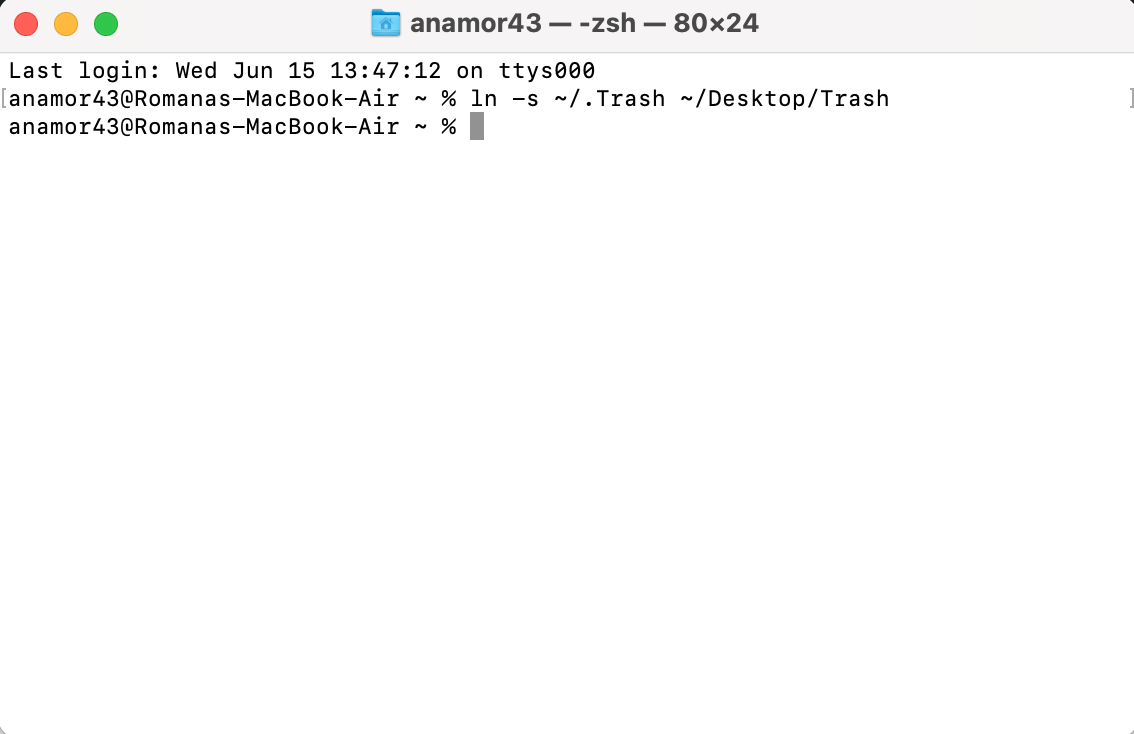
- Go to your Mac’s desktop and look for a folder called Trash (it’ll look like a regular folder).
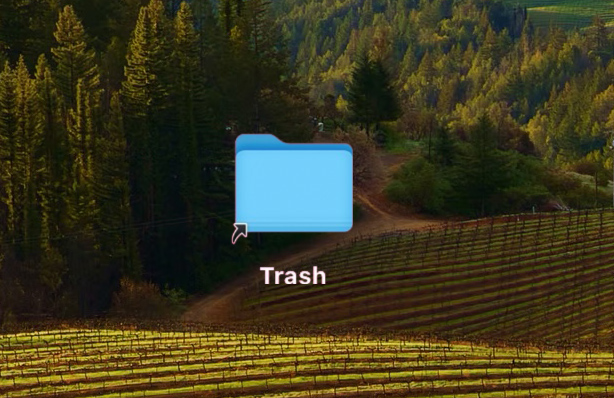
When you double-click this Trash folder on your desktop, it opens the standard Trash window where you can:
- View all deleted files waiting to be permanently removed.
- Restore files by dragging them back to any location on your Mac.
- Empty the Trash by right-clicking and selecting Empty Trash.
- Sort deleted items by name, date deleted, or size.
The folder works exactly like the normal Trash icon in your Dock, just in a different location. You can even drag files directly to this desktop folder to delete them.
The Bottom Line
Now you know several ways to recover emptied Trash on Mac and understand that the key is acting fast because every minute counts when you’re trying to recover deleted files from Trash on Mac, especially on newer models with SSDs and TRIM. And while recovery is often successful, nothing beats having a solid backup strategy, so consider setting up Time Machine if you haven’t already (your future self will thank you).
Did this guide help you recover your lost files? We’d love to hear about your experience. Which method worked for you? Was it specialized software like Disk Drill, Time Machine backups, or even professional services? Leave a comment below.
FAQ:
- Look for the files in the macOS Trash (if not yet emptied).
- Use a reliable data recovery program like Disk Drill to scan for and recover permanently deleted files.
- For business-critical data, consider professional data recovery services if software solutions don't work.
- Open Finder.
- Press Command + Shift + G to launch the Go To Folder menu.
- Type ~/.Trash in the text box and press Enter.

